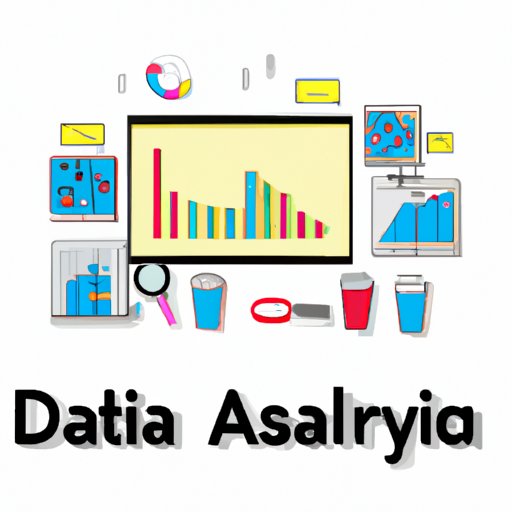Introduction
Data analysts are responsible for leveraging various methods and tools to collect, organize, analyze, interpret, and present data. As businesses continue to generate and collect more information, the demand for data analysts is expected to grow. Becoming a data analyst requires a unique set of skills and knowledge that can be acquired through education and experience.
In this article, we’ll explore the essential skills needed to become a data analyst, different types of data analysis techniques and how they can be used, commonly used software and tools for data analysis, basics of data visualization and presentation, and best practices and strategies for working with large data sets.
Identify Essential Skills Needed to Become a Data Analyst
To become a successful data analyst, you need a combination of technical and analytical skills. According to a report from IBM, “the most sought-after skills in the field of data analysis include deep understanding of mathematics and statistics, the ability to analyze, interpret, and visualize data, proficiency in programming languages such as Python and R, familiarity with machine learning algorithms, and knowledge of database management systems such as SQL.”
Having these skills will help you become a better data analyst, but it’s also important to have other soft skills such as problem-solving, critical thinking, and communication. Additionally, you should be comfortable working with large data sets and have a strong attention to detail.
Explore Different Types of Data Analysis Techniques and How They Can Be Used
Data analysis techniques can be divided into three main categories: descriptive analytics, predictive analytics, and prescriptive analytics. Descriptive analytics involves summarizing data to identify patterns, trends, and relationships. It’s used to gain insights into past performance and is helpful for making decisions about the future. Predictive analytics uses machine learning algorithms to make predictions about future outcomes based on historical data. Finally, prescriptive analytics uses optimization algorithms to recommend specific actions or solutions to a given problem.

Learn about Commonly Used Software and Tools for Data Analysis
Excel is one of the most widely used software programs for data analysis. It can be used to create charts and graphs, perform calculations, and organize data. Tableau is another popular data analysis tool that allows users to quickly and easily create visualizations from large datasets. Other commonly used software and tools for data analysis include the R programming language, Python, SAS, and SQL.

Understand the Basics of Data Visualization and Presentation
Data visualization is the process of transforming data into graphical representations such as charts and graphs. An effective data visualization should convey the key message of the data in a clear and concise way. When creating data visualizations, it’s important to consider the type of chart or graph that best communicates the data, as well as design principles such as color, font size, and label placement. Additionally, creating dashboards can be a great way to present data in an interactive format.

Examine Best Practices and Strategies for Working with Large Data Sets
Working with large data sets can be challenging, but there are several best practices and strategies that can help. Firstly, it’s important to take the time to clean and organize your data before beginning any analysis. This involves removing any duplicate or unnecessary data points, correcting any errors, and formatting the data correctly. Secondly, automating processes can save time and reduce the risk of human error. Finally, utilizing cloud computing can help you manage large data sets more efficiently.
Conclusion
Becoming a data analyst requires a unique set of skills and knowledge that can be acquired through education and experience. To become a successful data analyst, you need to understand essential skills such as math and statistics, the ability to analyze, interpret, and visualize data, proficiency in programming languages, and knowledge of database management systems. Additionally, it’s important to understand different types of data analysis techniques, commonly used software and tools for data analysis, basics of data visualization and presentation, and best practices and strategies for working with large data sets.
In summary, here are some tips for becoming a data analyst: Understand essential skills needed, explore different types of data analysis techniques, learn about commonly used software and tools for data analysis, understand the basics of data visualization and presentation, and examine best practices and strategies for working with large data sets.
Data analysis is becoming increasingly important in today’s world, and those who are able to master the skills required to become a data analyst will be well-positioned to pursue a rewarding career.
(Note: Is this article not meeting your expectations? Do you have knowledge or insights to share? Unlock new opportunities and expand your reach by joining our authors team. Click Registration to join us and share your expertise with our readers.)
